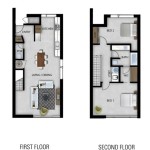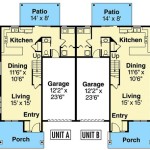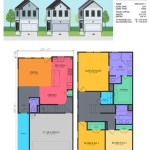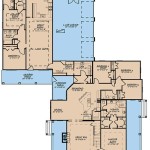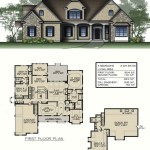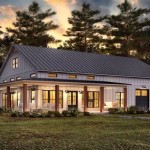Floor Plans For Small Houses: Maximizing Space in Two Stories
The appeal of a two-story small house lies in its ability to provide a comfortable living space without demanding a large footprint. This design approach is particularly beneficial in areas with limited land availability or where homeowners desire to minimize outdoor maintenance. Careful planning and innovative design solutions are paramount when designing a two-story small house to ensure optimal functionality and comfortable living.
Floor plans for small two-story houses need to prioritize space efficiency and flow. Every square foot must be utilized effectively, and the layout should facilitate easy movement between different areas of the house. This requires a strategic approach to room placement, storage solutions, and the use of vertical space.
Key Considerations When Designing a Two-Story Small House Floor Plan
Successfully designing a two-story small house involves addressing several key considerations to ensure a functional, comfortable, and aesthetically pleasing living environment. These considerations include space optimization, vertical circulation, and natural light integration.
Space Optimization: The limited footprint of a small house necessitates a thoughtful approach to maximizing interior space. Open floor plans, where living, dining, and kitchen areas flow seamlessly into one another, are common solutions. This design strategy eliminates unnecessary walls, creating a more spacious feel and allowing for greater flexibility in furniture arrangement. Multifunctional furniture, such as sofa beds and storage ottomans, can further enhance space utilization. Built-in storage solutions, like shelving units and under-stair storage, are also crucial for minimizing clutter and maximizing usable space. Careful consideration should be given to the placement of appliances and utilities to minimize their impact on the overall layout and ensure they are efficiently integrated into the design.
Vertical Circulation: The staircase is a prominent element in any two-story house, and its design significantly impacts both the aesthetic and functional aspects of the home. In a small house, minimizing the staircase's footprint is crucial. Options include spiral staircases, which are visually appealing and space-saving, or compact straight staircases with integrated storage underneath. The placement of the staircase also influences the flow of the house. Ideally, it should be located in a central area that provides easy access to both the upper and lower levels without obstructing the natural flow of movement. Consideration should also be given to the visual impact of the staircase. An open-riser staircase can create a sense of spaciousness and allow light to filter through, while a closed-riser staircase provides more privacy and sound insulation.
Natural Light Integration: Maximizing natural light is critical in small houses to create a brighter and more inviting atmosphere. Large windows and skylights can significantly enhance the sense of spaciousness and reduce the need for artificial lighting. Window placement should be carefully considered to optimize solar gain and provide desirable views. South-facing windows allow for maximum sunlight exposure during the winter months, while strategically placed windows and overhangs can help to mitigate heat gain during the summer. Light-colored walls and ceilings can also amplify the effect of natural light, making the interior feel larger and more airy. Interior layout should encourage light to travel through the house, using open circulation and minimal obstructions to facilitate natural illumination.
Common Floor Plan Layouts for Small Two-Story Houses
Several floor plan layouts are commonly employed in small two-story houses, each offering unique advantages and catering to different lifestyles. These layouts include the traditional two-story layout, the open-concept layout, and the split-level layout.
Traditional Two-Story Layout: This layout typically features the living areas (living room, dining room, and kitchen) on the ground floor and the bedrooms and bathrooms on the upper floor. This arrangement provides a clear separation between living and private spaces, offering a greater degree of privacy for occupants. The main advantage of this layout is its simplicity and efficiency in space utilization. The vertical stacking of rooms minimizes the overall footprint of the house, making it suitable for narrow lots. However, it can sometimes feel less spacious than open-concept layouts due to the defined separation between rooms. Thoughtful use of doorways and strategic window placement can help to mitigate this effect and create a more connected feel between the different areas.
Open-Concept Layout: As mentioned earlier, this design approach involves combining the living, dining, and kitchen areas into a single, large, open space on the ground floor. This creates a sense of spaciousness and allows for greater flexibility in furniture arrangement. Open-concept layouts are particularly well-suited for entertaining and socializing, as they facilitate easy interaction between family members and guests. The upper floor typically houses the bedrooms and bathrooms, providing a private retreat. The main challenge of open-concept layouts in small houses is maintaining a sense of order and preventing the space from feeling cluttered. Careful planning of storage solutions and the use of visual dividers, such as area rugs or changes in flooring, can help to define different zones within the open space and create a more organized and cohesive feel.
Split-Level Layout: This layout features multiple levels that are offset from each other by a half-story. This design approach can be particularly advantageous in small houses built on sloping lots, as it allows for a more efficient use of the terrain. Split-level layouts also offer a greater degree of privacy compared to open-concept layouts, as the different levels provide a natural separation between spaces. However, they can be more challenging to design and construct than traditional two-story or open-concept layouts. Careful consideration must be given to the placement of staircases and the flow of traffic between the different levels. The use of natural light and ventilation can also be more complex in split-level houses, requiring careful planning to ensure adequate illumination and air circulation throughout the home.
Interior Design Strategies for Small Two-Story Houses
The interior design of a small two-story house plays a crucial role in maximizing the sense of space and creating a comfortable and inviting living environment. Color schemes, furniture selection, and lighting design can all contribute to making a small house feel larger and more functional.
Color Schemes: Light and neutral color schemes are generally recommended for small houses, as they reflect light and create a sense of spaciousness. White, beige, and light gray tones are popular choices for walls, ceilings, and floors. Accent colors can be used sparingly to add visual interest and personality to the space. However, it is important to avoid using too many dark or bold colors, as they can make the room feel smaller and more enclosed. A monochromatic color scheme, using different shades of the same color, can also be effective in creating a cohesive and harmonious look. The key is to choose colors that are both aesthetically pleasing and conducive to creating a sense of spaciousness and openness.
Furniture Selection: The furniture in a small two-story house should be carefully selected to maximize space and functionality. Multifunctional furniture, such as sofa beds, storage ottomans, and expandable tables, is particularly valuable. Lightweight and streamlined furniture pieces are generally preferred over bulky or ornate items, as they take up less visual space and contribute to a more airy feel. The scale of the furniture should also be proportionate to the size of the room; oversized furniture can overwhelm a small space and make it feel even smaller. Wall-mounted furniture, such as shelves and cabinets, can also help to free up floor space and create a less cluttered look. The arrangement of furniture should be carefully considered to optimize traffic flow and create distinct zones within the room.
Lighting Design: Proper lighting is essential for creating a bright and inviting atmosphere in a small two-story house. As mentioned earlier, maximizing natural light is crucial. However, artificial lighting is also important for providing adequate illumination during the evenings and in areas where natural light is limited. A combination of ambient, task, and accent lighting can be used to create a well-balanced and functional lighting scheme. Ambient lighting provides overall illumination to a room, while task lighting is used for specific activities, such as reading or cooking. Accent lighting is used to highlight particular features or artwork. Recessed lighting is a popular choice for small houses, as it provides a clean and unobtrusive source of light. Track lighting and pendant lights can also be used to add visual interest and create focal points. The use of dimmers allows for greater control over the intensity of the light, allowing for a more customized and adaptable lighting experience.

Simple House Design Plans 11x11 With 3 Bedrooms Full Two Story Double Y Small Floor

Small Affordable 2 Story Home Plan North Ina Tennessee House Plans Narrow Floor

Small Two Story House Plans

2 Story House Plans Small Mansion Farmhouse Modern More Blog Floorplans Com

Small House Plans And Floor

Small 2 Story House Plans And Smart Tiny Two Level Floor

2 Story House Plans For Narrow Lots Blog Builderhouseplans Com

Custom 2 Story Houses New Two Home Plans Housing Development D House Layout Sims Blueprints

10 Small House Plans With Open Floor Blog Homeplans Com

Small 2 Story House Plans And Smart Tiny Two Level Floor

